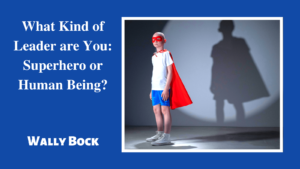3 Ways to Encourage Experiential Learning at Your School
School leaders can guide teachers to implement exciting learning opportunities for students across the curriculum.
Two years ago, my students in a leadership elective class noticed that the nearby park we used for outdoor learning seemed overgrown with weeds. The native forest, they hypothesized, seemed to be competing with plants that were out of place.
We took this hypothesis to the park service, and, partnering with a local ranger, we learned how to define and identify invasive, nonnative species in the field. My class adopted a portion of the park and implemented a “weed warrior” community service project there. From the students’ perspective, they had an opportunity to take ownership of a problem, learn about possible solutions, and make a difference in their community. From my perspective as an educator, I’d been lucky enough to facilitate a full cycle of experiential learning.
Experiential learning, according to the Association for Experiential Education, enables learners to “benefit from direct experience and focused reflection in order to increase knowledge, develop skills, clarify values, and develop a capacity to contribute to their communities.” Experiential learning can take a variety of forms. Teachers may incorporate simulations, role-plays, and project-based learning activities into their classrooms. Some schools have embraced experiential learning and built mini-terms or enrichment blocks into the academic calendar to facilitate an immersive experience for students. In all cases, students are given the opportunity to extract meaning from these experiences.
In my experience as a classroom teacher and an administrator, I’ve witnessed firsthand the difficulty that schools sometimes have encouraging and sustaining experiential learning across the curriculum. Luckily, three techniques can improve the quality of experiential learning while also demonstrating the power of this unique teaching style to the broader school community.
Strategy 1: Improvise, but Stay in Key
Traditional courses and curricula are a lot like concert bands: They follow a standardized structure. Experiential learning, however, is more like jazz. Although improvisational leeway exists for both instructor and student, a common framework still supports the entire process—much as a jazz soloist will improvise from common baseline guides like tempo and key.
To achieve decentralized yet consistent experiential learning at your school, consider adopting an experiential learning framework. Allowing faculty to collectively develop and refine the framework will ensure ownership and buy-in. The framework itself will ensure that, while the content of experiential learning activities may span the whole school curriculum, the process will be somewhat standardized from course to course.
This standardization allows students (and teachers) to become familiar with the key learning milestones. For example, our school converted David Kolb’s experiential ‘earning model into a four-phase framework (Learn, Do, Reflect, Act) to drive the development and submission of enrichment and mini-term project proposals. For a proposal focusing on map and compass skills, upper school students might first learn how to read a topographic map and use a compass (Learn), practice these skills in the outdoors (Do), reflect on what went well or needed improvement (Reflect), and then have the opportunity to teach and lead middle school students in a similar program the following semester (Act).
Our model allows teachers to develop projects that reflect their particular expertise and/or passion. At the same time, it provides students with a somewhat formalized framework through which they can extract meaning from experiential activities. In other words, both teacher and student have a lot of autonomy for improvisation from course to course, but the foundational learning process remains quite familiar. The soloists may sound quite different, but they all stay in the same key.
Strategy 2: Show What ‘Right’ Looks Like
Because there are so many varieties of experiential learning, a reliable model can help teachers design effective assignments. To provide examples of effective experiential learning at your school, consider creating relationships between faculty members with limited experience and those with demonstrated competency in experiential learning. This arrangement can be informal, such as quarterly check-ins, or more formal through structured observations and mentor-mentee relationships. Doing so can ensure that faculty who are new to experiential learning know what effective examples look and feel like.
For example, we provide new faculty with the opportunity to partner with members of our Experiential Learning Committee. This arrangement facilitates the development of informal mentor-mentee relationships throughout the academic year while ensuring that new teachers can always ask for help if they need it.
Strategy 3: Reap the Rewards
An effective tool to encourage experiential learning at any school is to involve the broader community. Doing so can demonstrate the power of this learning model far more than any formal professional development lecture or webinar. This can be as simple as a collaboration among faculty, or it can involve outreach to alumni and parents. Teachers can also collaborate with essential stakeholder groups such as scientists, business owners, government representatives, or subject matter experts.
For example, our entrepreneurship program utilizes the entire school community—faculty, staff, students, alumni, and parents—to serve as audience members and panelist judges when students research, develop, and present their business start-up pitches and proposals as part of their annual “Shark Tank” project. This allows a wide variety of community members to witness firsthand the power of a signature experiential learning project.
Recent student pitches have included a political app that linked stances on political issues with matching politicians (meant to encourage young people to vote) and a company that upcycled used electronics to reduce the impact of technological waste. For these projects, the focus was less on the actual product and more on the process of discovery, development, and ideation.
Your goal may be to empower teachers to implement nontraditional, project-based activities and assessments or to persuade the administration to incorporate robust, multiweek enrichments. Either way, these strategies can go a long way toward integrating experiential learning across the curriculum.
Source: https://www.edutopia.org/article/3-ways-encourage-experiential-learning-your-school




